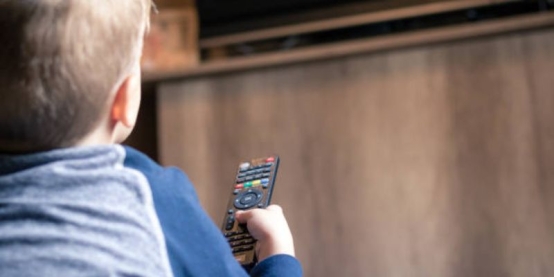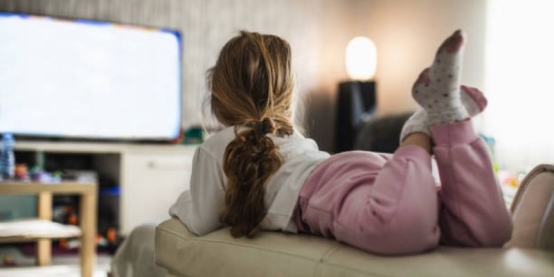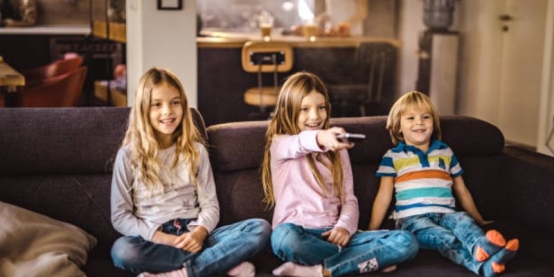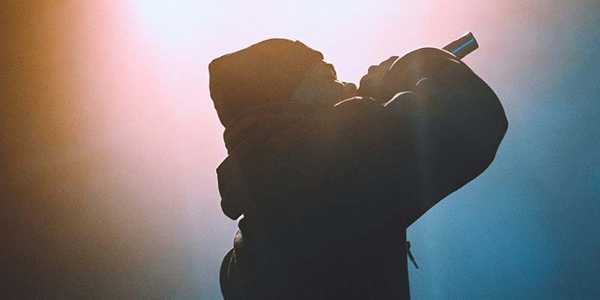TV Shows
18 Must-Watch Science Shows For Curious Kids
Science television shows for children are potent vehicles. They do more than amuse—they provide windows into nature, space, biology, and experimentation in a way that elicits curiosity and constructs knowledge. Discover the best science shows for kids by age and topic, plus tips for choosing wisely, boosting learning, and streaming safely.
Science television shows for children are potent vehicles. They do more than amuse—they provide windows into nature, space, biology, and experimentation in a way that elicits curiosity and constructs knowledge. Discover the best science shows for kids by age and topic, plus tips for choosing wisely, boosting learning, and streaming safely.
Why Science Shows Are Essential for Kids
Science shows assist a child to grow in several measurable ways:
Encouraging critical thinking and curiosity
When children see questions being posed—"How does a volcano erupt?" or "Why do leaves change color?"—they begin to wonder and pose questions themselves.
Making complex concepts accessible through images and storytelling
Television and streaming shows can employ experiments, animation, and real-life examples to render ideas like gravity, ecosystems, space, or chemical reactions straightforward. This helps comprehension much more than text or lectures.

Supplementing school education and promoting family involvement
These programs can support school science curricula, and also provide a means for parents and kids to view, discuss, and even conduct follow-up activities together at home. Research demonstrates that kids learn cognitively when educational television is well designed and watched with support.
Selecting the Appropriate Science Program
Choosing the correct show makes it both fun and learning. Take the following criteria into consideration:
Age-appropriateness
Preschoolers (ages 3–6) learn through colorful graphics, simple storylines, and basic science principles. Kids in the 7–10 or older range can handle more abstract ideas, longer episode duration, and more detailed explanations.
Scientific accuracy
Check if the program is produced in consultation with scientists or educators. Programs that experimentally verify assertions, cite sources, or show experiments are more likely to be credible.
Learning style
Visual storytelling, experiments, animations, hands-on demonstrations, and interactive or game-like elements appeal to different learning styles.
Availability on trusted platforms
Use reputable streaming sites or channels for safe, screened content. Official websites sustain rights, quality, and safety.
Parental involvement or co-viewing
Co-viewing allows for discussion: "What do you think will happen?" or "Why is that significant?" Such questions assist learning, help with comprehension, and foster critical thinking.
Best Science Shows for Preschoolers (Ages 3–6)
These shows are ideal for the youngest learners: engaging, visual, reinforcing foundational science principles.
Sid the Science Kid (PBS Kids, Netflix, Amazon Prime)
Builds science readiness through Sid's questions about everyday phenomena (e.g. senses, measurement). Uses songs, puppetry, and school-based learning. Great for ages 3-6. Where to watch: Netflix and Prime Video carry episodes in most regions.
Octonauts (Netflix / Disney+)
Centers on marine biology and environmental principles with underwater missions. Characters explore, rescue sea creatures, and learn about ocean environments. For ages approximately 4-7.
Dino Dana / Dino Dan (Amazon Prime)
Combines dinosaurs and STEM: kids learn about fossil facts, ancient environments, and engage with science through the imaginative world of paleontology and biology. Excellent for dinosaur-obsessed children.
Ada Twist, Scientist (Netflix)
Based on the book by Andrea Beaty. The lead character Ada solves issues by questioning, experimenting, and collaboration. Encourages early interest and.
Ready Jet Go! (PBS Kids)
Based on astronomy, Earth science, and habitats. Made in consultation with NASA. Simple format, engaging visuals, apt for early learners who have an interest in space.
Best Science Shows for Kids Ages 7–10
For kids ready for more advanced content: including experiments, history of science, and more complex biology or physics.
The Magic School Bus Rides Again (Netflix)
A reboot of the classic favorite. Field trips with Ms. Frizzle take kids into ecosystems, outer space, and inside the human body. Great at combining storytelling with the learning of scientific principles.
Brainchild (Netflix)
Targets kids in the range of about 8-12. Topics include emotions, dreams, motivation, the brain, social media and how they relate to science. Offers fun experiments and real-life application.

Wild Kratts (PBS Kids/streaming services)
Combines animation with actual animal science. The Kratt brothers use "creature powers" to teach biology, behavior, ecosystems. Suitable for nature-interested kids age 6-10.
Ask the StoryBots (Netflix)
Takes big curious questions—Why is the sky blue? How do airplanes fly?—and answers with humor, song, and simple-to-understand science. Appeals to school-age kids who like quirky, fun learning.
Operation Ouch! (YouTube / CBBC)
A live-action show where twin doctors present health, biology, and the human body through experiments and sometimes gross but memorable visuals. Great for ages 8-11, with an interest in medicine and biology.
Best Science TV for Tweens and Young Teens (Ages 11-14)
These programs present more mature material, fundamental scientific research, complex subjects, and often more advanced visual or documentary-style production.
MythBusters Jr. (Discovery+ / Science channel platforms)
Teen hosts and scientists bust myths and attempt them with real experiments. Emphasizes the scientific method: hypothesis, testing, observation, conclusion. Appropriate for ages 10-14.
Cosmos: A Spacetime Odyssey (Disney+ / Netflix / purchase options)
Hosted by Neil deGrasse Tyson, the series deals with cosmology, the history of science, physics, and astronomy with great production values and visual appeal. Suitable for teenagers and families interested in space, time, and universe-scale themes.
Brain Games (Disney+ / National Geographic)
Concentrates on psychology, neuroscience, perception, illusions. Encourages the audience to question what the brain is doing, how it can be fooled, and why human cognition matters. Suitable for ages 11-14.
Xploration Station / other field-specific documentary series
Series that are Earth science, space, new tech, environment, sustainability. These are appropriate for older kids who are ready to learn from honest science discussion and current scientific research.
Best YouTube Science Channels for Kids
Free or low-cost short-form complements show nicely.
SciShow Kids
Short episodes (~5 minutes), visually engaging, explainers on the "why" and "how" of daily science. Best for 5-10 years old.
Crash Course Kids
Covers classroom science topics: ecosystems, weather, space, and physical science. Includes animations and hosts; also excellent for school projects or catch-ups.
MinuteEarth / MinutePhysics
These channels explain big ideas (geology, physics, Earth systems) in simple, elegant graphics. Ages 11+ or younger if you pause and explain.
NASA Kids' Zone
Official space agency content (video segments, animations) directly from NASA. Reliable, up-to-date, ideal for kids fascinated by space and exploration.
Making Science Shows More Educational: Some Tips
TV viewing is excellent, but certain habits make learning last:
Following an episode, recap key points: ask "What surprised you the most?" or "How can we try something like that at home?"
Try simple at-home experiments from episodes (with safe materials). If a show presents an experiment, attempt a simplified version.
Pose predictions before experiments: "What do you think will happen if…?" This builds hypothesis formation.
Relate episodes to the real world: visit parks, museums, nature walks, planetariums. Observing trees, insects, or stars provides meaning to what is seen on television.

Where to Stream Science Shows Safely
To ensure safe, high-quality viewing:
Use major platforms known for vetted content: Netflix, Disney+, PBS Kids, Amazon Prime Video, YouTube Kids. These often have content ratings, parental controls, and kid-friendly profiles.
Choose ad-free or ad-limited services when possible, especially for younger viewers, to reduce exposure to irrelevant or unsafe ads.
Set up kid profiles, filters, or parental controls so that inappropriate content isn’t suggested.
Use official or verified channels for free content (YouTube Kids, official NASA channel, etc.) to avoid misleading or misinformative content.
Making Science Shows More Useful for Children
Here are some practical suggestions so the science shows are more than just filling screen time:
Set goals or themes: Pick a topic (like space, plants, human body) for the week. Watch episodes within that theme and compare what is learned.
Use accompanying educational materials: Most shows offer free lesson plans, printable worksheets, or experiment instructions. For example, Brainchild has classroom and home worksheets aligned with education standards.
Encourage note-taking or journaling: Even for young children, drawing or writing down what they remember cements learning and can spawn additional questions.
Co-watch and co-learn with your child: This permits the correction of misunderstandings, addressing follow-up questions, and modeling of sound scientific thought.
Balance screen time: Shows are tools, but pairing with outdoor activities, hands-on science kits, reading, or museum visits strengthens understanding.
Splashing Science Shows Across Real Regions
Show availability differs by region or nation. It's best to check local streaming rights. Some shows will be on Netflix in one country but not in another; others will be on sale instead of streaming. Using services that permit downloads or offline viewing also assists in regions with sporadic internet.
Adopting Science Shows as Collective Discovery
Television science for children is not a passive process. It can inspire wonder, frame thinking, and lay the groundwork for learning to come. Families that learn together—where parents, siblings, or friends engage in questions, experiments, and observations—seem to gain the most. Let science viewing be a spur to curiosity, conversation, and exploration.
Sources
TV Shows
What Are The Best TV Shows To Watch With Tweens
September 5, 2025
Celebrity
12 Famous Actors Who Got Their Big Break By Accident
August 31, 2025
Movies
7 New Halloween Movies You Can’t Miss This Year
September 5, 2025
Celebrity
How Much Did Taylor Swift Pay For Her Masters: The Full Story
August 22, 2025
Outfit Ideas
Cute Halloween Costumes For Boys And Girls
September 10, 2025
Movies
12 Classic Halloween Movies That Never Get Old
September 6, 2025

Celebrity
The World's 18 Richest Rappers: Who Has The Highest Net Worth?
August 21, 2025

Outfit Ideas
The Ultimate Guide To Dressing For Your Body Type
September 3, 2025

Outfit Ideas
Creative Couple Halloween Costume Ideas For Every Style
August 28, 2025

TV Shows
The Best Office Laughs: Workplace Comedies You Can’t Miss
August 26, 2025

TV Shows
7 Classic Family Sitcoms Worth Revisiting
September 11, 2025

TV Shows
20+ TV Shows That Make You Laugh and Cry
September 12, 2025